By Mark Vorpahl
The unions remain the only organizations in this country built by and for workers to be a collective fighting force to defend and improve the members’ standard of living. While only a minority belong to unions, all workers’ fate depends on their strength. Unfortunately they have been taking a serious beating. How has the leadership of Labor been responding?
Labor Officials’ Response to Labor’s Decline
At a Washington State Labor Council Convention on August 7th, AFL-CIO Executive Vice President, Arlene Holt Baker, addressed the assembled, saying:
“It is important to put our resources into our own PACs (Political Action Committees) and programs instead of any political party…Only with an independent labor movement can we campaign day-in and day-out for working people.”
She further stated:
“This political season we have every reason to go the extra mile. We’re building a grassroots movement like America hasn’t seen in generations. We’ll struggle to keep democracy strong in America so every one that has a right to cast a vote can cast that vote and have it counted.”
Vice President Baker’s call for “an independent labor movement” is the result of growing dissatisfaction from the ranks of unions over the policies of the Republicans and Democrats alike that have resulted in massive job losses, cuts to education and social services, declining wages and benefits, diminishing union rights, and attacks on social programs such as Medicare and Social Security.
The Problem With the Labor Officials’ Response
The union leadership has traditionally thrown their support and considerable resources behind Democrats such as Obama. Yet these politicians have been quick to drop their promises to Labor. They have stood to the side as the Republicans have pursued an aggressive anti-worker agenda, and they have also taken the lead in advocating or supporting many policies that hurt workers. Obama’s support of public school privatization under the program of “Race to the Top,” the $1.2 trillion in cuts to social programs scheduled to go into effect in January of 2013, and the bailout of Wall Street for the economic crisis it created while workers continue to suffer from the effects of the Great Recession are a few of the most notable examples.
Labor’s ranks, and workers in general, are hurting and angry. Growing numbers are asking, “What do we have to show for our political efforts and support for the Democrats? Isn’t there another way?”
The union leadership has heard this, especially since such talk is a criticism of their own political policies. If they want to lead they must recognize the simmering dissatisfaction of those they are charged with representing. Vice President Baker’s speech was framed with this discontent in mind.
That by itself is significant. However, the “extra mile” she encouraged members to go is to turn out the vote for Obama and other Democrats yet again. AFL-CIO President Richard Trumka has already pledged to assemble 400,000 volunteers for the effort.
The Need For a Genuinely Independent Labor Movement
This raises the question of what “an independent labor movement” would look like and what kind of campaigns it would pursue.
The independence that Baker is speaking of is justified along the lines of, when it comes to politics, “Labor rewards its friends and punishes its enemies.” That is, Labor’s leadership supports politicians that supposedly promote workers’ interests regardless of their political party. Since the Republicans and Democrats are this nation’s only major political parties, it is necessary to pressure their politicians for Labor to have a national voice in this country’s policies.
No doubt those advocating such an approach are assured by their sense of political realism. There is a little problem, however: the entire game is rigged for the interests of Wall Street, the corporations, and banks. Both the Democrats’ and Republicans’ coffers are overflowing with funds from such sources. Their policies are an unambiguous affirmation of the economic elite’s political domination at workers’ expense. Any politician who hopes to make a career within these parties soon learns how the game is played in order to advance.
The influence of Labor within these circles resembles that of a corner preacher in a neighborhood dominated by the Mafia. Some mobsters may see it best to placate the ragged fellow in his pleas for peace and lawfulness, but that won’t stop them from robbing his followers.
Consequently, those advocating that Labor use its strength to pressure politicians from the two main parties of this nation are not exercising political realism. Quite the opposite, they are indulging in the wildest delusions. The evidence of this is all around to see. With 23 million unemployed and underemployed, speedups on the job, cuts to education and our social safety net, as well as the continuing deterioration of our nation’s infrastructure while the 1% hoards trillions of dollars and enjoys record low levels of taxation, rank and file workers have little reason to accept Labor leaders continual support for politicians who abandon them after election.
If a genuinely independent labor movement is to rise to today’s challenges, its independence must be built on the interests and organization of workers apart from those who exploit us and the politicians they fund. It must not simply be a movement composed of workers, but a movement that unites them on the basis of their shared interests in opposition to the aims of the top 1%.
The ground for this development is being prepared by the big business elite themselves. They are determined to crush opposition to their greed as they dismantle the gains that have been won by the workers’ movement over the last century. Their class consciousness could not be more focused, but there are limits to their reach before workers find ways to fight back.
Regardless of who wins the next elections, big business aggression will likely accelerate. If Labor is to survive, all available resources and then some, must be thrown into the coming battles.
This means, of course, first and foremost, mobilizing massive numbers of working people to fight, to defend themselves by demanding the government implement a jobs program that can put all those wanting work into good paying jobs. In addition it means building strike funds for individual union struggles as well as expanding union organizing. It also requires that Labor lead on behalf of all workers by getting behind a social movement that represents the interests of the great majority.
The lack of good full-time jobs is having the most widespread impact on working class communities. Therefore, a social movement demanding jobs, to be paid for by taxing the rich would be a good way to start forging the necessary unity to make a difference. The projected cuts to our social programs will also hurt millions of working people. Consequently, a social movement against cuts in budgets and for taxing Wall Street and the rich in general would provide a way for these millions to resist big business’s greedy priorities and demand budgets that meet workers’ needs.
Such platform points are a good foundation for building an independent Labor Movement. They are not enough, however. Just as important are the ways this organizing is done.
These efforts’ primary goals must be to activate workers and empower their collective efforts to be heard loud and clear on a national scale. This has nothing to do with the lobbying tactics Labor’s leaders are more accustomed to. For Labor to organize independently on a class basis it must employ all the tools of mass education and mass action to demonstrate unified strength and draw a line between our interests and those of both corporate political parties.
If Labor were assembling 400,000 volunteers to campaign day-in and day-out for such an approach, we would be much more able to build a grassroots movement like workers in America haven’t seen in generations. Instead of knocking on doors to promote a party line, these volunteers would be encouraging workers to come together on the basis of their own collective interests. Using these efforts to fill the streets in defense of jobs, needed social programs, and the well-being of our communities would be the most politically effective way of moving our issues to the front burner.
Mark Vorpahl is an union steward, social justice activist, and writer for Workers’ Action – www.workerscompass.org. He can be reached at Portland@workerscompass.org.

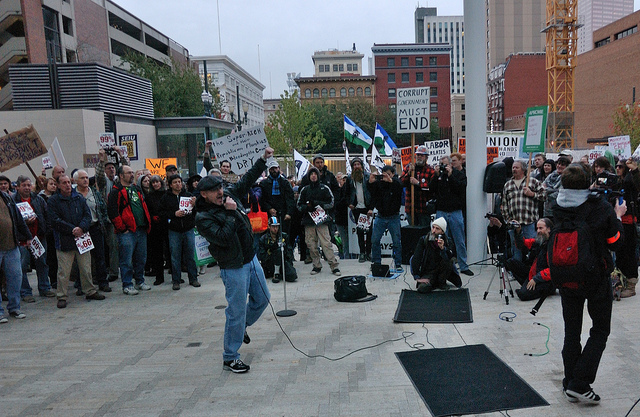


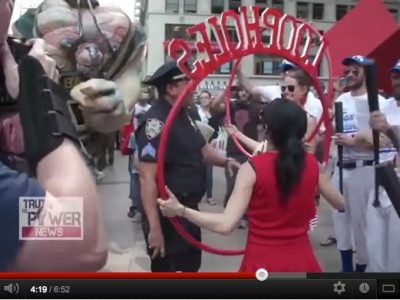
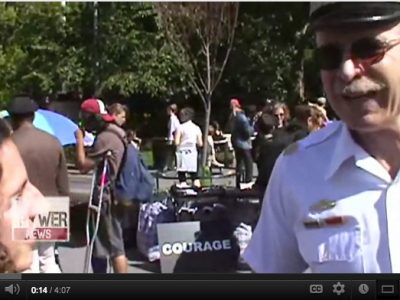
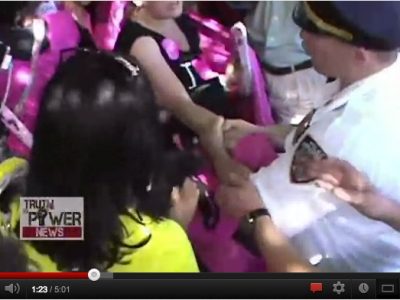
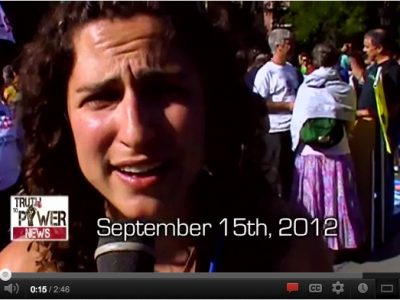
1 comment for “What Does “Independence” Mean for Labor?”